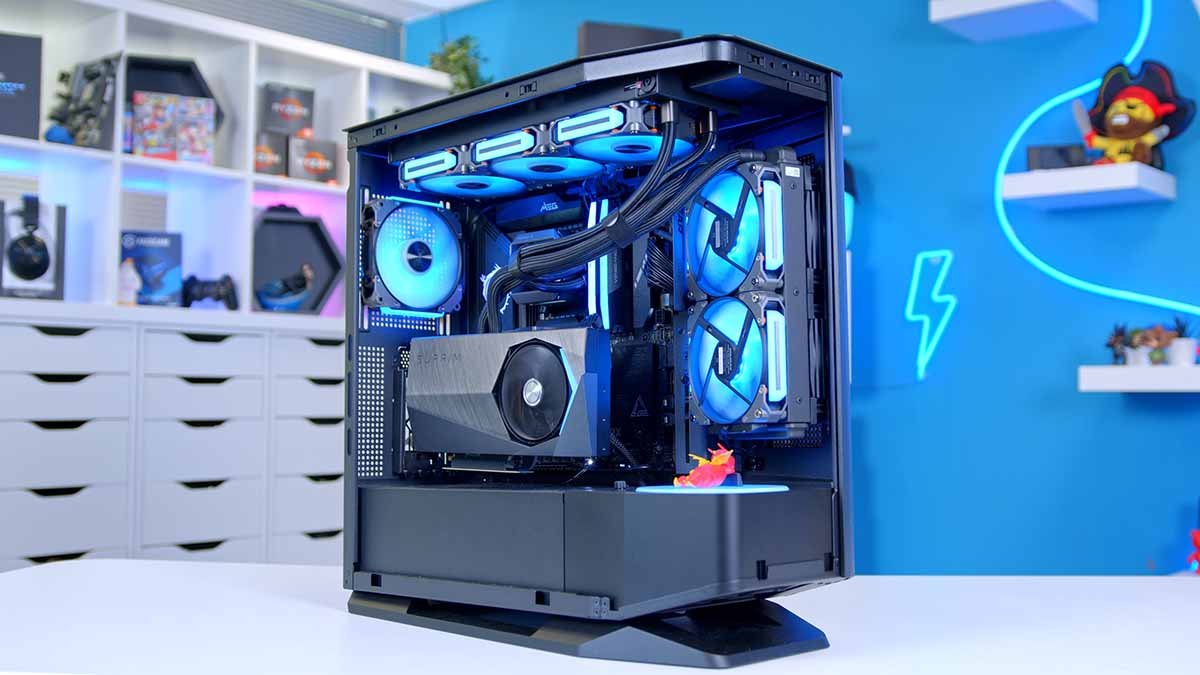One of the biggest advantages of building your own PC is the flexibility to upgrade over time. But many people think they need to replace the entire system when performance starts to dip. The truth is, with a little planning and smart part choices, you can extend your PC’s life by upgrading individual components.
In this article, we’ll show you how to upgrade your PC strategically, boost performance, and save money—without replacing everything.
What Parts Can Be Upgraded Easily?
Here are the core PC components you can upgrade individually:
| Component | Upgrade Frequency | Performance Impact |
|---|---|---|
| GPU | Every 3–5 years | High (gaming, rendering) |
| CPU | Every 4–6 years | High (general performance) |
| RAM | Every 4 years | Medium (multitasking) |
| Storage (SSD/HDD) | Every 3–5 years | Medium (speed/load times) |
| PSU | Every 5–8 years | Low (unless upgrading GPU) |
| Cooling | As needed | Low (noise/temp control) |
Your motherboard and case typically last through multiple upgrade cycles—especially if you choose the right platform from the start.
Step 1: Choose a Future-Proof Platform
When first building or upgrading:
- Go with AM5 socket (AMD) or LGA1700+ (Intel)
- Choose a motherboard with DDR5 and PCIe 5.0 support
- Buy a case with space for future GPUs and cooling
This ensures you can upgrade to next-gen CPUs and GPUs without replacing your board or case.
Step 2: Upgrade Your GPU First
Why GPU first?
- It delivers the biggest performance boost in games
- You can often reuse your current CPU/RAM without issue
Things to check:
- PSU wattage: ensure it can handle the new GPU
- Case space: high-end GPUs are physically large
- Cooling: more powerful GPUs may require better airflow
Step 3: Add More RAM (or Faster RAM)
More RAM improves:
- Game load times
- Streaming and multitasking
- Creative workloads (video editing, music production)
Upgrade tips:
- Stick with the same brand and speed
- Dual-channel is better than single
- 16GB is enough for most games, 32GB for heavy users
Step 4: Swap to a Faster SSD
Moving from a SATA SSD or HDD to an NVMe PCIe Gen 4 or 5 SSD drastically improves:
- Boot times
- Game and app loading
- System responsiveness
How to do it:
- Clone your OS using software like Macrium Reflect or Samsung Data Migration
- Or reinstall Windows fresh on your new drive
Step 5: Replace the Power Supply (If Needed)
If you upgrade to a high-end GPU, check if your current PSU has:
- Enough wattage (750W+ for cards like RTX 4080/5090)
- The right connectors (PCIe 8-pin or 12VHPWR)
- 80+ Gold or better certification (for efficiency and safety)
A good PSU can last two full builds if chosen wisely.
Step 6: Improve Cooling and Reduce Noise
As components get faster, they also get hotter.
Cooling upgrades include:
- Air coolers (Noctua, Be Quiet!)
- AIO liquid coolers (Corsair, NZXT)
- Extra case fans with better airflow
This helps keep your system stable and quiet as you upgrade.
Bonus: External Accessories to Upgrade Your Experience
Sometimes, upgrading your peripherals improves your setup more than changing internal parts.
Consider:
- Higher refresh rate monitor (144Hz or 240Hz)
- Mechanical keyboard
- Higher DPI mouse
- Better headset for gaming/communication
- A comfortable gaming chair or desk
Final Tip: Don’t Over-Upgrade
Sometimes, it’s better to wait or combine small upgrades into one major refresh.
Ask yourself:
- Is this upgrade giving me significant performance for the price?
- Will this part work with future upgrades?
- Could this money be saved for a bigger jump next year?
Wrapping Up: Build Once, Upgrade Smart
You don’t need to replace your whole PC to keep up with new games or applications. With smart part choices, careful planning, and a little know-how, you can stretch your system’s lifespan while still enjoying top-tier performance.
Next up: “The Best Tools and Software Every PC Builder Should Have”
Upgrade Strategy Recap
- Choose a Future-Proof Platform
- AM5 (AMD) or LGA1700+ (Intel) motherboards
- DDR5 and PCIe 5.0 support, spacious case
- Upgrade Your GPU First
- Biggest performance boost
- Check PSU wattage, connectors, and physical space
- Boost Your RAM
- Add more sticks or upgrade speed (match existing kit)
- 16 GB for mid-range gaming; 32 GB for productivity or heavy multitasking
- Move to a Faster SSD
- Switch to PCIe Gen 4/5 NVMe SSD for faster load and boot speeds
- Use cloning software or fresh Windows install
- Replace PSU if Needed
- Upgrade if you add high-end components requiring more power
- Opt for 80+ Gold or Platinum ratings
- Enhance Cooling
- Upgrade air coolers or install AIO liquid cooling
- Add more case fans to maintain low temperatures
- Peripherals & Accessories
- Upgrade monitor (144+ Hz), keyboard, mouse, headset, or ergonomic gear for better user experience
Smart Tips Before Upgrading
- Avoid common bottlenecks by ensuring balance between CPU, GPU, and RAM
- Avoid mismatched RAM—stick to the same kit
- Plan cost-effectively—sometimes, saving for a larger upgrade yields better value than piecemeal changes
Next article in line:
“The Best Tools and Software Every PC Builder Should Have” – ready whenever you are!
